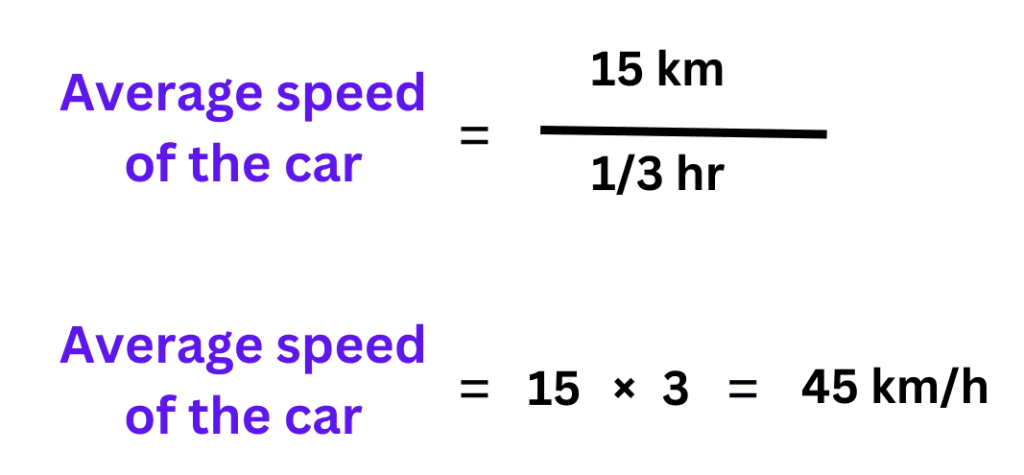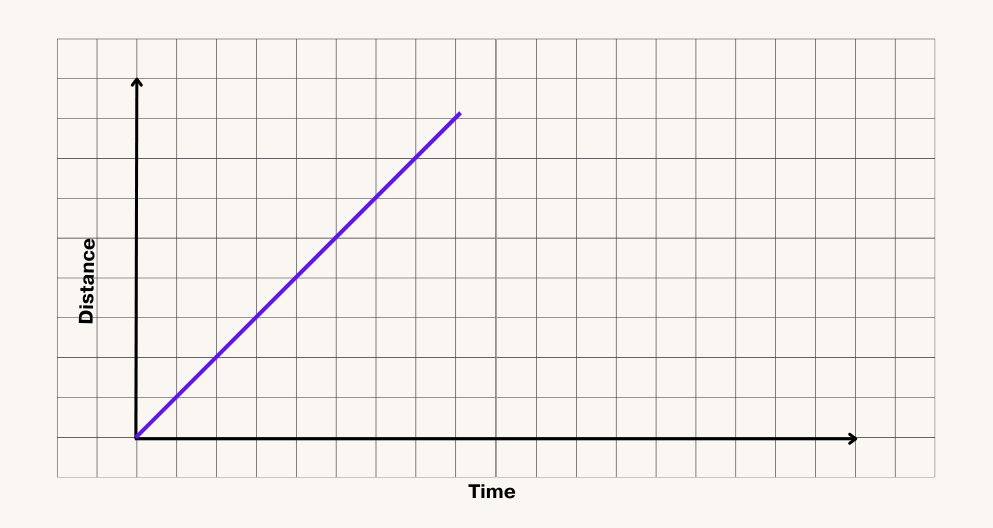Before trying to answer the NCERT exercise questions, you should have a thorough understanding of class 7 Science chapter 9 i.e. ‘Motion and Time‘.
If you haven’t understood the chapter yet, then worry not you can go through it easily and develop a crystal clear understanding of various concepts from our notes whose link has been provided below. ⤵️
NCERT Exercise Questions & Answers
Que. 1 Classify the following as motion along a straight line, circular or oscillatory motion:
(i) Motion of your hands while running.
(ii) Motion of a horse pulling a cart on a straight road.
(iii) Motion of a child in a merry-go-round.
(iv) Motion of a child on a see-saw.
(v) Motion of the hammer of an electric bell.
(vi) Motion of a train on a straight bridge.
Ans. 1 (i) Oscillatory motion.
(ii) Motion along a straight line.
(iii) Circular motion.
(iv) Oscillatory motion.
(v) Oscillatory motion.
(vi) Motion along a straight line.
Que. 2 Which of the following is/are not correct?
(i) The basic unit of time is second.
(ii) Every object moves with a constant speed.
(iii) Distances between two cities are measured in kilometres.
(iv) The time period of a given pendulum is constant.
(v) The speed of a train is expressed in m/h.
Ans. 2 (ii) Incorrect. Every object moves either with a constant or a variable speed (correct).
(v) Incorrect. The speed of a train is expressed in km/h (correct).
Que. 3 A simple pendulum takes 32 s to complete 20 oscillations. What is the time period of the pendulum?
Ans. 3 Total number of oscillations that a pendulum does = 20
Total time taken by the pendulum in doing 20 oscillations = 32 s

Time taken by the pendulum to complete one oscillation = 32/20 = 1.6 s
Que. 4 The distance between the two stations is 240 km. A train takes 4 hours to cover this distance. Calculate the speed of the train.
Ans. 4 Distance between the two stations = 240 km
Total time taken by the train = 4 hrs

The average speed of the train = 240/4 = 60 km/h.
Que. 5 The odometer of a car reads 57321.0 km when the clock shows the time 08:30 AM. What is the distance moved by the car, if at 08:50 AM, the odometer reading has changed to 57336.0 km? Calculate the speed of the car in km/min during this time. Express the speed in km/h also.
Ans. 5 Initial reading of the odometer is 57321.0 km
The final reading of the odometer is 57336.0 km
So, the total distance moved by the car is 57336 – 57321 = 15 km
Total time taken by the car starting at 8:30 AM and stopping at 8:50 AM = 20 mins
So, the average speed of the car = 15/20 = 0.75 km/min
And, We know that 60 mins = 1 hr
so, 1 min = 1/60 hr
and, 20 mins = 1/60 × 20 = 1/3 hr

Que. 6 Salma takes 15 minutes from her house to reach her school on a bicycle. If the bicycle has a speed of 2 m/s, calculate the distance between her house and the school.
Ans. 6 Total time taken by Salma to reach her house = 15 minutes = 15×60 = 900 seconds
Speed of her bicycle = 2 m/s

Therefore, the distance of her home from her school is = 2×900 = 1,800 m.
As we all know 1000 m = 1 km
so, 1 m = 1/1000 km
and, 1800 m = 1/1000×1800 = 1.8 km
Que. 7 Show the shape of the distance-time graph for the motion in the following cases:
(i) A car moving at a constant speed.
(ii) A car parked on a side road.
Ans. 7 (i) The distance-time graph for a car moving at a constant speed is:

(ii) The distance-time graph for a car parked on a side road:

Que. 8 Which of the following relations is correct?
(i) Speed = Distance × Time
(ii) Speed = Distance/Time
(iii) Speed = Time/Distance
(iv) Speed = 1/(Distance×Time)
Ans. 8 (ii) Speed = Distance/Time
Que. 9 The basic unit of speed is:
(i) km/min
(ii) m/min
(iii) km/h
(iv) m/s
Ans. 9 (iv) The basic unit of speed is m/s.
Que. 10 A car moves at a speed of 40 km/h for 15 minutes and then at a speed of 60 km/h for the next 15 minutes. The total distance covered by the car is:
(i) 100 km
(ii) 25 km
(iii) 15 km
(iv) 10 km
Ans. 10 (ii) 25 km.
Speed of car is = 40 km/h
Time = 15 mins = 15/60 = 0.25 hr
Distance travelled = 40×0.25 = 10 km
Now, the speed of the car is = 60 km/h
Time = 15 mins = 15/60 = 0.25 hr
Distance travelled = 60×0.25 = 15 km
So, the total distance travelled by the car is = 10 + 15 = 25 km
Que. 11 Suppose the two photographs, shown in Fig. 9.1 and Fig. 9.2, had been taken at an interval of 10 seconds. If a distance of 100 metres is shown by 1 cm in these photographs, calculate the speed of the
fastest car.

Ans. 11 The distance covered by the blue car (in Fig 9.1 to 9.2) from one horizontal white strip to another, which is measured by scale is 1.1 cm.
It is given that, 1 cm = 100 m
∴,1.1 cm = 110 m of distance.
The time taken by the blue car to cover this distance is = 10 seconds
Hence, the speed of this blue car is = 110/10 = 11 m/s
Que. 12 The given figure shows the distance-time graph for the motion of two vehicles A and B. Which one of them is moving faster?

Ans. 12 Vehicle A is moving faster than vehicle B.
As we all know an object is said to be moving faster if it covers more distance in a given amount of time. So, at any instant in time if we find out the distances moved by each vehicle we’ll get to know which is moving faster.

So, at an instant of time (marked by a black dotted line) the distance covered by vehicle A is more than the distance covered by vehicle B. Hence, vehicle A is moving faster than vehicle B.
Que. 13 Which of the following distance-time graphs shows a truck moving with a speed that is not constant?

Ans. 13 The (iii) distance-time graph shows that the speed of a moving truck is not constant because the line graph is not a straight line but a curved line.
Credits & References
Thank You for Choosing Sciक्षक ❤️

